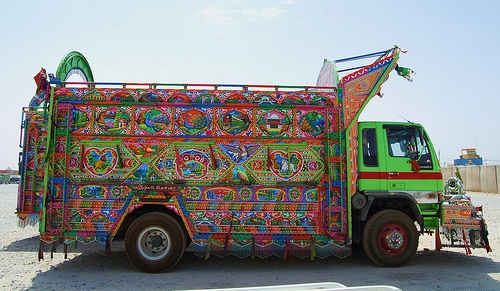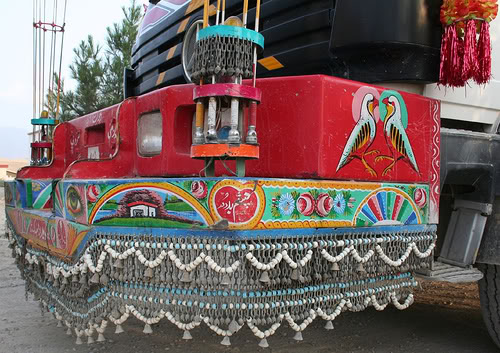Or: How to Have a Very Rough Tuesday That Turns Out Not So Bad
It’s Sunday, our full day off from training, and I’m so grateful for this opportunity to rest and reflect on the past week. The majority of the other Combat Airman Skills Training (CAST) students have boarded the bus and departed for a few hours at Lackland Air Force Base where they can attend church services, shop, take long showers (we’re limited to 3 minutes here), see movies, and eat something other than the boring institutional meals and Meals Ready to Eat (MREs) we get at camp.
I’m staying at camp to RICE (rest, ice, compression wrap, and elevate) my sore and sorry arthritic knees, and catch up on phone calls and online stuff. I’m used to spending a lot of time each week on my own, so it’s nice to finally have some quiet time to process all the things that have happened since I arrived at camp last Sunday afternoon.
Tuesday was, by far, my most difficult training day. You may recall from previous posts that I qualified on the M9 pistol and the M4 carbine. Those qualifications were a few weeks ago, and I hadn’t handled those firearms since then. We were issued our training M9s and M4s on Monday afternoon, and Tuesday was a brief classroom firearms refresher right after breakfast followed by a trip directly to the firing range for various firing exercises.
Things started going bad for me during the classroom lecture. Our instructors are called the Cadre and there are about a dozen of them here each specializing in different technical/tactical subjects. Our firearms refresher Cadre warned us all upfront that this refresher would move quickly as we were expected to come into this training already possessing weapons expertise (uh-oh) and that he liked to crack jokes and be sarcastic.
The refresher training did indeed go very quickly — too quickly for me. About a third of the material presented was substantially similar to what I recalled from my previous M9 and M4 qualification training. Another third was somewhat similar to my previous training. The rest of it was brand new to me. I quickly became confused.
I was near my “new” limit early into class that morning. Wearing a 40-pound flak vest with armor plates and ammunition magazines attached was new to me. Having a sling on the M4 was new to me. Carrying both the M9 and the M4 together was new to me. My head was already spinning from all the other stuff that was new to me since I arrived, and the new/different refresher information caused me to question and ultimately lose all confidence in anything I thought I knew from my firearms qualification training. I got very, very nervous.
Then there were the safety warnings and jokes.
The rational side of me understood that what I was hearing were standard safety messages, rare worst-case-scenario warnings, jokes, sarcasm, hyperbole, and the stereotypical testosterone-soaked macho bullshit guys fling around when they are getting psyched up to go shooting. Despite understanding this and telling myself over and over not to freak myself out, the more primitive parts of my brain got the upper hand and by the end of the lecture I was awash in the fight-flight-or-freeze chemicals that afflict those who are facing an immediate and substantial threat.
I was numb getting on the bus. On the ride over, I started shaking and I felt like I couldn’t breathe. I kept telling myself everything would all come back to me and I’d be just fine, but by the time we got off the bus I couldn’t feel my hands or feet. No matter how loudly I mentally shouted — screamed — that everything would be fine, I could not drown out the fear that I was going to injure myself or shoot one of my classmates or Cadre.
Our first exercise was using dummy ammo magazines to fire our M9s and M4s. The Cadre were shouting at us to increase the stress level and get us to perform despite the commotion (the type of situation we could expect if we had to perform in a real world shooting scenario). As I stood on the firing line fumbling with my equipment, a Cadre came up behind me and informed me that my M4 was slung incorrectly; I was shooting right handed and the sling was on my left shoulder. He rearranged the sling so it sat on my right shoulder, but when I held the gun correctly it was awkward and unfamiliar (I had spent the last several hours getting used to the sling in a different configuration). Additionally, a buckle on the sling now bit painfully into my shoulder so I could hardly keep the gun up.
That was it. Any hope I had of holding myself together was gone.
We went back to the area behind the tower to await instructions to approach the firing line for our next exercise. The other students were milling around, but I stood glued to the ground. I was shaking and hyperventilating. I was lightheaded and had tunnel vision. Tears were running down my face. I didn’t realize it at the time, but I was having a full-on anxiety attack. More unwelcome new stuff I didn’t know how to process.
The Cadre were standing about 30 feet away up on a berm. I don’t know if they saw shaking or hyperventilating or waterworks from that distance in a person wearing a helmet, flak vest, gloves, and black wraparound shooting glasses. Maybe they noticed the other students edging away from me because they either saw or sensed that I was a hot mess. Whatever it was, the top ranking Cadre pulled me out of the group when everyone else went to the shooting line and asked me what was going on.
I did my best to be coherent between sobs. Clearly I could not be issued real ammunition in this state, and in retrospect I’m a little surprised they didn’t take my weapons away on the spot. Perhaps I came across as only pathetic and not dangerous. Regardless, as the Cadre explained how I would fail the course and have to be sent home if I could not complete the firing exercise, a miracle occurred.
A meteorological miracle.
No, I was not hit by a meteor, though I wished very hard for it in that moment.
It was a cloudy day, and the ceiling had been getting lower throughout the morning. Suddenly, the clouds dropped below 1200 feet. No shooting is allowed if the ceiling is below 1200 feet due to the range’s proximity to flightpaths at a nearby airfield. The range exercise had to be cancelled. No shooting for the rest of the day. A reprieve! I nearly fainted with relief.
A few students noticed I had been pulled off the line. On the bus going back, one of my classmates invited me to sit next to him and engaged me in light conversation. Blessedly, he did not ask me what went wrong, he just offered some friendly talk. By the time we got back to camp I could feel my extremities and was able to put whole sentences together. By the time we finished our MRE lunch, I was almost normal.
At this point, the easy thing to do would be to just pretend nothing happened, practice like heck with my weapons to get comfortable before the next trip to the range, and move on. But a couple little things stuck in the back of my mind that I couldn’t ignore. 35 classmates and a dozen Cadre had watched me walking around the previous afternoon/evening and that morning slinging my M4 incorrectly, and none of them had mentioned it to me. I was struggling at the firing range and several other students noticed but turned away instead of approaching me to help. My meltdown on the range that morning was nobody’s responsibility but mine; however, I wasn’t going to make it through the rest of the course without Wingman support, and I wasn’t going to get that support unless I asked for it.
I got permission to speak to the class before the afternoon lesson began. I stood at the front of the room and briefly explained what had happened that morning, apologizing for causing the Cadre to have to pull me off the line. Then I explained that downrange, everyone was going to have to deal with civilians because civilians are deployed, too, and not all of them are prior military (like all the civilians in this class but me). I described how inexperienced I am with the weapons and other things military (I’m still bad at donning and doffing cover), and asked that people please approach me and correct me if they see me doing something that isn’t right. I told them that everyone at some point will need Wingman support, and it was everyone’s responsibility to look out for each other and to ask for help. Which I needed. Now.
After that, several classmates reached out to offer me help, and others to admit that they were very nervous on the range, also. A Marine helped me reconfigure my M4 sling so the buckle doesn’t bite me anymore. Shooting instructors showed me tricks for different gun handling to maximize my capabilities and minimize my weaknesses. My tent-mates joined me in reviewing and practicing firing and clearing procedures until we were all feeling more comfortable and proficient. I went to bed that night knowing I had the skills I needed to do ok, and that I wasn’t alone in feeling anxious about the exercise.
The next day on the range I did great.
Best of all, as the course goes on, the other students are comfortable approaching me and offering corrections or assistance, or just asking how I’m doing. I’m so grateful. I’m a fish out of water here, but a fish with lots of Wingmen which is making all the difference.
MM















